Hydrangea "Dolly": description, planting, care and reproduction
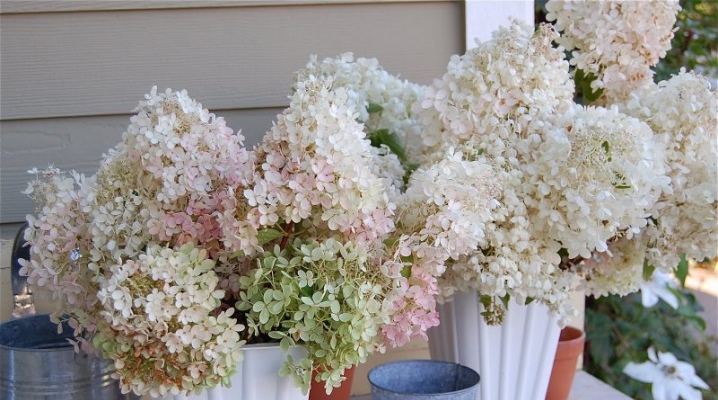
For many decades, flowers have been an integral part of every garden and local area. The long and painstaking work of breeders has led to the appearance on the market of new species of flowering plants. Despite the varietal diversity, florists recommend paying attention to unpretentious crops that do not require increased attention to themselves and easily tolerate adverse climatic conditions and temperature changes. It is to such a group of flowers that the Dolly hydrangea belongs, which in the first year will delight its owners with bright and beautiful flowers.

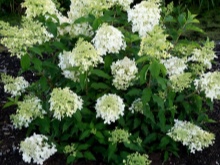
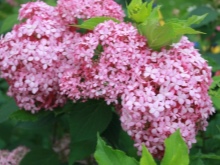
Description
Hydrangea paniculata "Dolly" is a spreading and at the same time compact plant, the height of which does not exceed 1.5 meters. A distinctive feature is cone-shaped panicle inflorescences, the size of which can reach 30 cm. Each inflorescence consists of a huge number of small flowers, which consist of four petals. This flower belongs to deciduous shrubs with a spherical crown diameter of about 120 cm. The shade of strong and straight shoots is gray.
Hydrangea branches are so powerful that they almost never bend under the weight of heavy flowers.
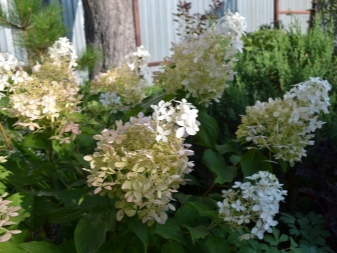
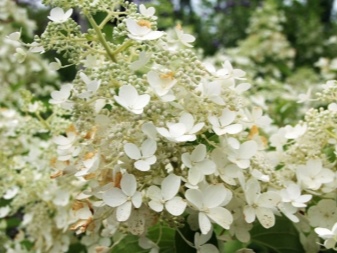
The Dolly variety begins to bloom in early July and lasts until the end of December. At the beginning of summer, the flowers are painted in a white shade, but by the middle of autumn the hydrangea will delight its owners with a pale pink color scheme, which looks especially impressive against the background of a dense and green crown. Throughout the flowering period, the bushes are fragrant with a delicate, pleasant and slightly sweet aroma.
The leaf plate is distinguished not only by a rich green tint and an oblong shape, but also by well-visible veins.

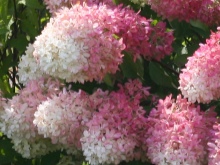

Landing
In order for the culture to grow well and bloom profusely, it is necessary not only to plant it correctly, but also to correctly choose a place for planting. The flower feels comfortable both in sunny areas and in places with light partial shade, but it is better not to plant it under tree crowns. Dense shade and lack of moisture will negatively affect the appearance of the bush, and also lead to a complete lack of flowers. Experts do not recommend planting hydrangeas in areas with a high lime content.
The selected site should also be well protected from strong air currents that can damage young plantings.
Experienced summer residents recommend giving preference to areas near fences and houses.
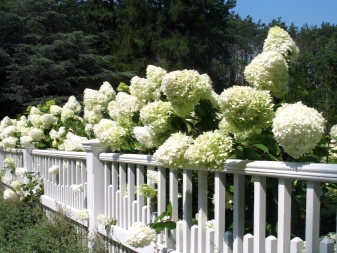
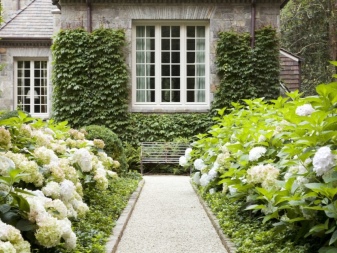
The most favorable time for planting is early spring and mid-autumn. In regions with unfavorable and difficult climatic conditions, it is better not to delay planting and carry it out in April. The best soil for shrubs is fertile loams.
Before starting the formation of planting holes, it is imperative to dig the entire site with the simultaneous removal of weeds, roots and stones. The optimum depth of the planting pit should be 30 cm, and its diameter should not be less than 40 cm. When planting several plants in one row at the same time, experts recommend leaving at least 120 cm between the holes.
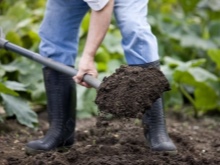

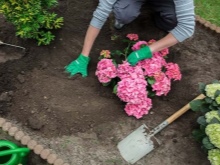
The nutrient substrate for filling the hole should consist of a mixture of peat, humus, leafy earth and river sand. The acidity level of the soil should not exceed 5 units. If this indicator exceeds the permissible rate, then experienced gardeners recommend adding 1 tablespoon of superphosphate, pine bark, potassium and urea to the soil. The choice of planting material is an equally important event that has a direct impact on the appearance of future green spaces. It is better to acquire young shoots in specialized nurseries, in which only high-quality planting material with appropriate genetic characteristics is sold. All shoots must be healthy and free from signs of disease.
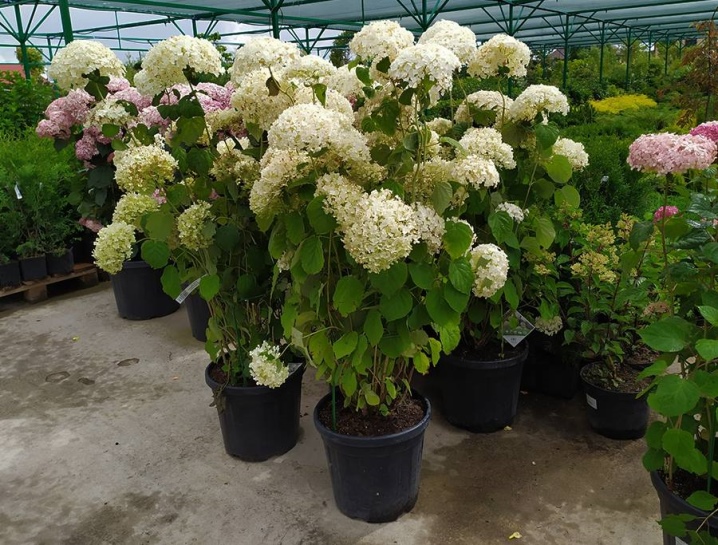
If the shrub has an open root system, then it is strictly forbidden to dry it out. Hydrangea with dry roots may simply not accept and die.
This planting material is best planted on the day of purchase. If this is not possible, then experienced gardeners recommend burying the root system in a container with wet sawdust before planting. As this substrate dries, water must be added to it.
This storage method can be used for no more than 5 days. To ensure the maximum level of rooting, experts recommend purchasing healthy and beautiful seedlings in containers. The optimum seedling height is 80 cm. Signs of quality cuttings are manifested in the following:
- the presence of at least 3 kidneys;
- absence of mold and marks left by parasites;
- fresh and beautiful leaves;
- the presence of an elastic and healthy root system.
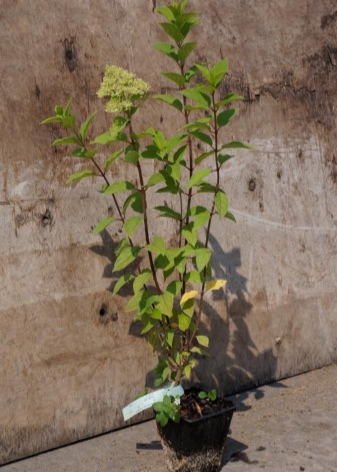
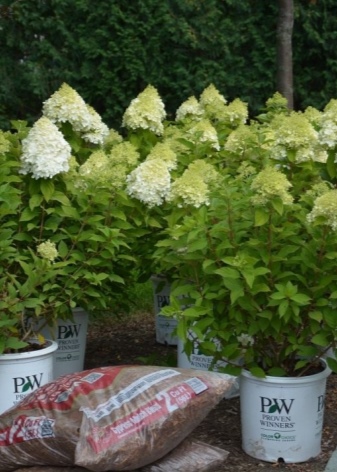
After carrying out all the preparatory work, you can proceed to the direct planting of the flower. Despite the plant's love for water, experts recommend putting a small layer of drainage material at the bottom of the planting pit, which will prevent rotting of the root system at high humidity levels. As drainage, you can use medium-sized pebbles, expanded clay or broken brick. It is better to spill the planting hole with plenty of water. In the center of the hole, it is necessary to form a small hill on which the planting material must be placed, after carefully straightening the entire root system.
It is necessary to fill in all the voids very carefully, trying not to damage the young roots. Each poured layer must be compacted slightly.
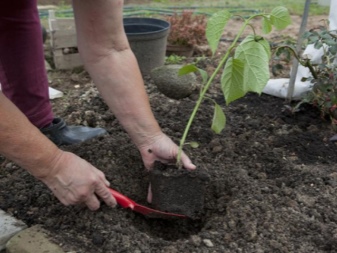
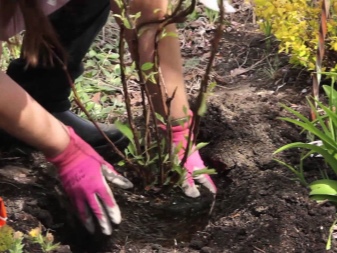
It is strictly forbidden to deeply deepen the root collar, it should be at ground level.
The final stage of the planting process is abundant watering of the plant with clean and settled water. To prevent the soil from drying out, experienced gardeners recommend mulching the entire near-trunk zone with chopped tree bark or peat. All aboveground green appendages must be removed. To increase the percentage of rooting of cuttings, their preliminary soaking in an accelerator of growth and formation of the root system, which can be purchased at garden stores, will help.
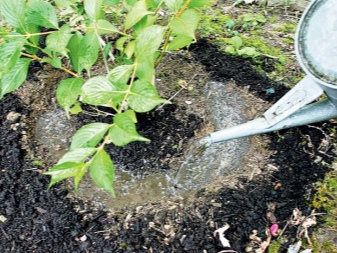
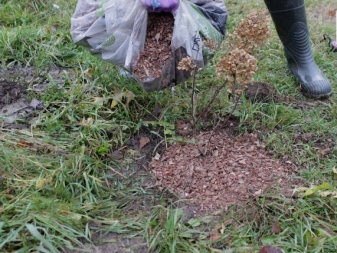
Care
Hydrangea is an unpretentious plant that can withstand temperatures as low as -35 degrees. Caring for the Dolly variety will not cause difficulties even for novice gardeners. For in order for the flower to always look attractive, it is necessary to carry out the following measures in a timely manner:
- watering;
- top dressing;
- loosening the soil;
- pruning;
- preparation for winter.
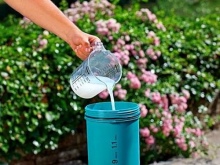

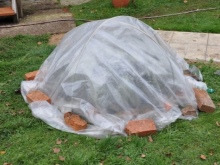
To provide the flower with all the necessary nutrients, experts recommend feeding it twice a year. The first time it is necessary to enrich the soil with minerals is at the beginning of summer. The second feeding should be done 14 days after the first. As a nutrient composition, you can use rotted manure or a special mineral complex, which should include potassium, nitrogen and phosphorus.
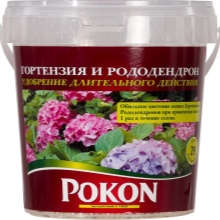

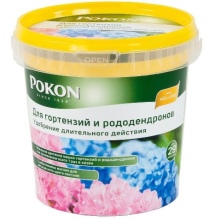
Some gardeners in the middle of autumn water their pets with milk whey, which helps to change the color of the inflorescences from white to pink.
Drought and overdried mail have a negative impact on the formation of the crown and inflorescences, so florists recommend not forgetting to water regularly. Despite the love for water, the plant does not tolerate its stagnation, therefore it is necessary to moisten the soil only after the top layer has completely dried. Mulching materials will help to retain moisture, which must be laid in a thick layer throughout the root zone. To ensure maximum oxygen access to the root system, it is necessary to regularly loosen the top layer of the earth and remove weeds in a timely manner. The amount of these manipulations should not be less than 4 times per season.
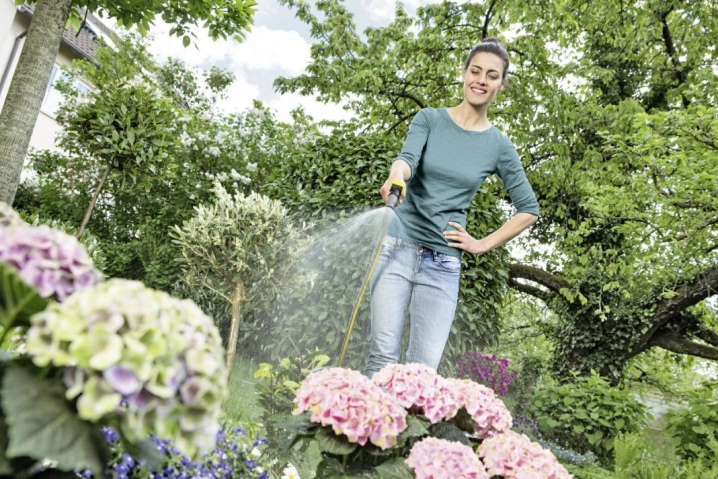
To ensure the beautiful appearance of the hydrangea, it is necessary to carry out sanitary and formative pruning. Sanitary cutting involves the removal in early spring and late autumn of all diseased, damaged and dry shoots. Formative pruning can only be carried out in the second year of life, when the plant gets stronger and takes root. In each bush, no more than 9 branches must be left that grow outward, and all internal shoots must be removed. And it is also better to get rid of young and weak growth. Removing unnecessary shoots should be carried out only at the beginning of spring, but in the fall it is better to refuse this event.
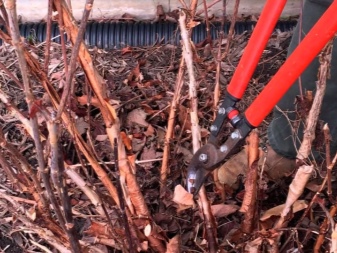
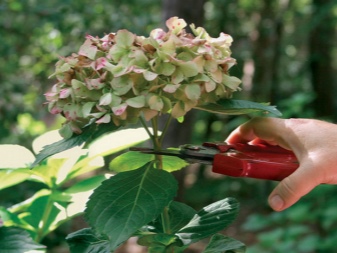
Despite the high level of resistance to temperature fluctuations and frost, in regions with difficult climatic conditions in late autumn, it is better to carry out a number of preparatory measures before winter. A large amount of water poured under the bush and hilling the plant will help protect the root system from freezing. Old bushes do not need additional insulation, but it is better to cover young plants with spruce branches or non-woven material, which must be removed after the snow melts.
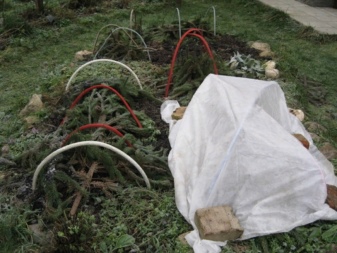
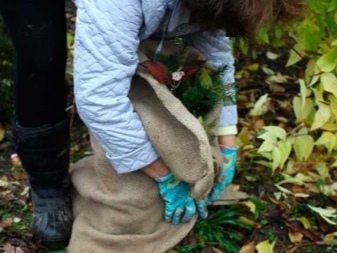
Reproduction
To get new bushes of hydrangea "Dolly" experts recommend using two breeding methods:
- cuttings;
- taps.
To obtain planting cuttings, it is necessary to cut off the necessary planting material from young shoots at the beginning of summer and immediately put it in water in which the root system growth accelerator is dissolved. This procedure is best done early in the morning before sunrise. It is necessary to keep the shoots in water for several hours and only then plant them in special containers with a nutrient mixture. To speed up rooting, it is better to create a shelter in the form of a greenhouse around the planting containers.
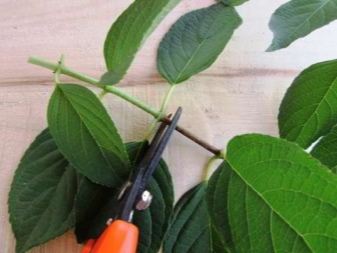
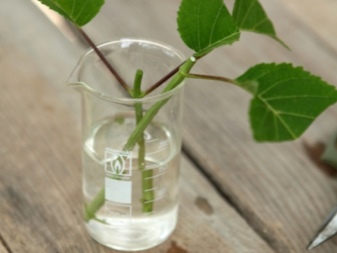
Within a month after the appearance of new leaves, the shoots can be transplanted to a permanent place of growth. Young flowers need special attention and care.
An equally popular breeding method is the method of rooting branches, which involves covering a small area of the lower shoots with earth. Experienced gardeners recommend using small pieces of wire to hold the branches to hold them in place. Throughout the season, all bends must be regularly watered and hilled. Subject to all the rules of care at the beginning of autumn, the height of new shoots on the planting material should reach 50 cm. At the end of winter, all branches must be sprinkled with foliage or spruce branches, and only next spring can they be separated from the mother bush and transplanted to a new place.

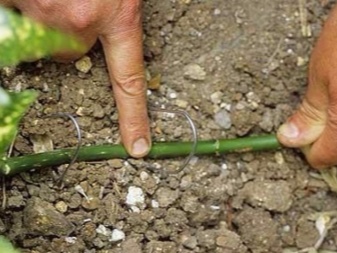
Diseases and pests
Hydrangea "Dolly" is a unique flower that is practically not affected by pests and does not suffer from diseases, which cannot but delight gardeners. Despite this feature, aphids or powdery mildew can spoil the appearance of the flower. To prevent these problems, it is necessary to regularly inspect the bushes and, when the first signs of the presence of parasites or disease appear, treat the bushes with special chemicals. In the fight against pests and diseases, folk remedies have also proven themselves well. The most popular are ash and garlic infusion.
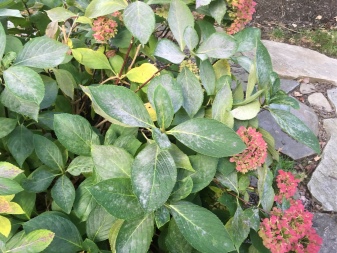
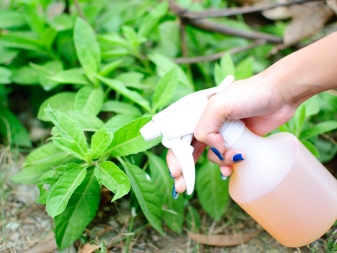
Examples in landscape design
Hydrangea "Dolly" is an incredibly beautiful flower that can be found both in city alleys and flower beds, and near private houses. This flower can be either an independent decorative object or a part of a flower arrangement. Many landscape designers plant hydrangeas near junipers and other conifers, the green crown of which is very effectively set off by the bright colors of the flower.
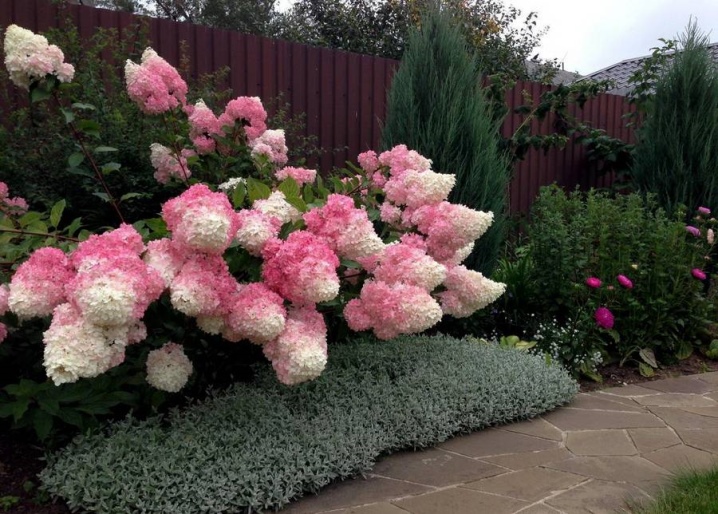
The combination of hydrangea with large peonies makes it possible to create an incredibly beautiful blooming composition, consisting of large inflorescences of various shapes and colors. A classic landscape architecture is the planting of this flower near the green plantings of lilac and mock-orange. This combination allows you to admire the flowering of hydrangea immediately after the lilac inflorescences wither. Single flower arrangements, planted on a green lawn near the fence or near the entrance to the house, look no less impressive.
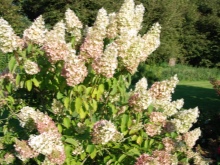
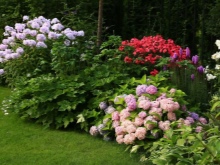
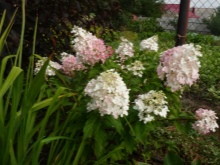
Unfavorable neighbors for hydrangeas are all fruit trees, fruit bushes, linden and viburnum. These species will not only take away the necessary moisture from the flower, but will also cause the flower to become infected with dangerous pests and diseases that they themselves suffer from, which will negatively affect the appearance of the flower.
All about hydrangea "Dolly" in the next video.



































































The comment was sent successfully.